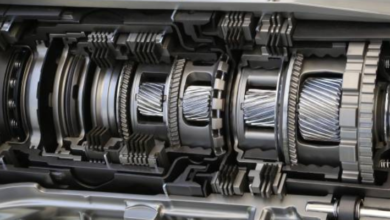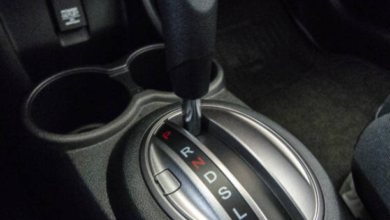DSG Transmission: Advantages and Disadvantages

What is DSG Transmission and how does it works?
DSG stands for Direct-Shift Gearbox which is a transmission system of cars. It is an automated manual transmission system that works without the clutch pedal, thus eliminating the need for a traditional clutch pedal. The alternative is to use dual clutches to transition between gears, that will be very fast and with a little or no jerk, while the rest still uses a manual transmission.
The DSG gearbox is basically a combination of two complete manual gearboxes, each with its own clutch, and they are enclosed in one unit. One clutch handles the odd-numbered gears (1st, 3rd, 5th, etc. ), the other clutch works with the even-numbered gears (2nd, 4th, 6th, etc. ). Thus, the driver can smoothly and quickly change the gears without the hassle of shifting manually and at the same time, the driver can have the comfort of the automatic transmission.
DSG transmission are famous for their quick gear changes, which can happen in milliseconds, thus, ensuring smoother acceleration and better fuel efficiency than the traditional automatic transfers. They are commonly seen in top-notch cars and are now being also used in ordinary cars.
Advantages of DSG Transmission
DSG transmissions offer several advantages over traditional automatic and manual transmissions:
Rapid Gear Changes: The DSG transmissions are able to change the gears instantly in milliseconds, which is much faster when compared to the conventional automatic transmissions. Hence, the rapid changing of gears is a major factor that is responsible for the smoother acceleration and better performance, especially in the high-performance cars.
Improved Fuel Efficiency: The DSG transmissions work in a way which is more fuel efficient than the conventional automatic transmissions. The strict control of gear shifts enables the engine to work efficiently over a greater spectrum of driving situations.
Seamless Driving Experience: As the gear changes are so smooth and quick, driving with a DSG transmission feels like it is a continuous process. There’s absolutely no power cut during the shifting of gears hence making the driving experience enjoyable and at a higher level of quality.
Dual Clutch Design: The two-clutch structure of DSG transmissions combines the advantages of manual and automatic transmissions automatically. It is the combination of convenience of an automatic transmission with the control and engagement of a manual gearbox.
Adaptability to Driving Styles: DSG transmissions usually come with different driving modes (like sport, comfort, eco, etc.), thus, the driver can choose the gearbox’s modes according to his/her preferences or driving conditions. This characteristic of the students also increases the performance and the efficiency at the same time.
Reduced Driver Fatigue: Since gear changes are automatic, drivers don’t need to bother about their clutch pedals in heavy traffic or during long drives. This diminishes driver tiredness and hence makes driving easier especially in cities.
High Torque Handling: DSG transmissions are able to operate at higher torque levels than traditional automatic transmissions, and hence, they are the right choice for high-performance vehicles or vehicles with turbocharged engines.
Disadvantages of DSG Transmission
Alongwith several advantages of DSG Transmission, there are also some disadvantages which makes the user hesitant. Some drawbacks are following:
Complexity and Cost: DSG transmissions are more difficult to understand than the traditional automatic or manual ones because of their two-clutch design and the advanced control systems. The complicatedness of this technology can be the cause of the higher manufacturing costs which in turn will be the reason for the higher price of the cars with DSG transmissions. Moreover, repairing or maintaining them is more expensive than repairing or maintaining the conventional transmissions.
Potential for Jerky Behavior at Low Speeds: At some times, especially in the case of low speeds or parking maneuvers, the DSG transmissions might show jerkiness or slight hesitation. The quick shifting is a result of the dual-clutch design and the transmission’s requirement to engage and disengage clutches quickly.
Heat Build-Up and Cooling Requirements: The DSG transmissions can have a fast gear change which leads to a lot of heat, this is why it is required to use some additions such as oil coolers. The heat buildup can also likely cause the transmission component to fail if not properly managed.
Learning Curve for Some Drivers: DSG transmitions allow the drivers to change gears automatically, but some drivers might not get used to the transmission’s features especially if they are used to driving vehicles with the automatic or manual transmissions.
Potential for Clutch Wear: Nevertheless, the DSG transmissions even though they are the most sophisticated, they still use the clutches for gear engagement. After a while, the clutches may start to wear out and need to be replaced, which is both expensive and tiring.
Limited Availability in Some Markets: Although DSG transmissions are being used more and more, they are still not as widely available as the automatic or manual transmissions in some countries. The restricted access to vehicles might make the car selection for some consumers negative.




